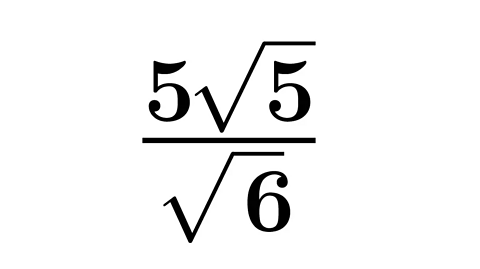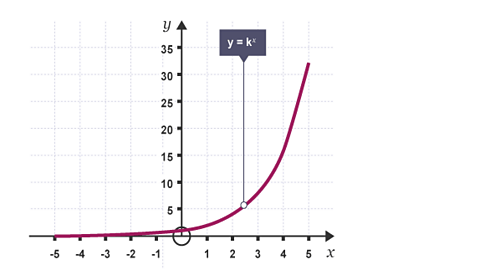Irrational / Rational Numbers and Recurring Decimals
Every number is either rational or irrational, whether large or small, negative or positive.
Rational Numbers and recurring decimals
A rational number can be written exactly in the form \(\frac{a}{b}\), where ØæÄ and ØæÅ are integers, while an irrational number cannot.
Examples of rational numbers
| ░└(ÔÇâÔÂ─âÔÂ─â\┤┌░¨▓╣│ªÁ¸7░¿Á¸8░¿ÔÇâÔÂ─âÔÂ─â\) | ÔÇâÔÂ─âÔÂ─âÔÂ─â87ÔÇâÔÂ─âÔÂ─â | ÔÇâÔÂ─âÔÂ─âÔÂ─â0.21ÔÇâÔÂ─âÔÂ─â | ÔÇâÔÂ─âÔÂ─â\(-░└┤┌░¨▓╣│ªÁ¸19░¿Á¸4░¿░└)ÔÇâÔÂ─âÔÂ─â | ░└(ÔÇâÔÂ─âÔÂ─â0.Á¸░└╗Õ┤Ã│┘Á¸6░¿░¿░└) |
| ÔÇâÔÂ─âÔÂ─âÔÂ─âÔÂ─âÔÂ─â | Can be written as \(\frac{87}{1}\) | Can be written as \(\frac{21}{100}\) | ÔÇâÔÂ─âÔÂ─âÔÂ─âÔÂ─âÔÂ─â | Can be written as \(\frac{2}{3}\) |
All Recurring decimalNumbers repeat forever after the decimal point can be written as fractions and are therefore rational.
A Terminating decimalsDecimal numbers that have a finite number of digits after the decimal point. can be easily written as a fraction (as in the examples above), but a recurring decimal is not so easily converted to a fraction.
Changing a recurring decimal to a fraction
Example
Write \(0.\dot{6}\) as a recurring decimal. (We know that the answer should be \(\frac{2}{3}\)).
Let r = the recurring decimal.
r = 0.666666
Multiply r by 10
10r = 6.666666666
r = 0.666666666
Subtract
9r = 6
Divide
\(r = \frac{6}{9} = \frac{2}{3} \)
In general, for any recurring decimal
- Let r = the recurring decimal
- Multiply r by a suitable power of ten - multiply by 10 if one digit repeats, 100 for 2 digits, 1000 for 3 digits etc.
- Subtract to get a multiple of r
- Divide to give the required fraction
Example
Write the recurring decimal 0.1818181818 as a fraction
Solution
- Let r = the recurring decimal
r = 0.18181818181 - Multiply r by 100 as two digits are repeating
100r = 18.181818181 - Subtract to get a multiple of r
100r = 18.181818181
r = 0.18181818181
99r = 18 - Divide to give the required fraction
\(r= \frac{18}{99} = \frac{2}{11}\)
Answer
\(\mathbf{\frac{2}{11}}\)
Question
Write the recurring decimal 0.3888888888888888 as a fraction
100r = 38.8888888888
10r = 3.88888888888
\(90r = 35\)
\(r = \frac{35}{90} = \frac{7}{18}\)
Irrational numbers
Irrational numbers cannot be written as a fraction.
The types of irrational numbers that should be known are:
- Square roots (of numbers that are not square) e. g. 2, 5, 3.65, etc.
- Multiples and powers of ¤Ç e. g. \(\frac {\pi}{2}, 5\pi, 2\pi^2\) etc.
Example
Which of these numbers are irrational?
0.635 ÔÇâ 18¤Ç ÔÇâ ÔêÜ400 ÔÇâ \(\mathbf{0.\dot{1}\dot{2}}\) ÔÇâ ÔêÜ28
Solution
18¤Ç, ÔêÜ28 are irrational. The others can be written in the form \(\frac{a}{b}\)
\(0.635 = \frac{635}{1000}\)  \(\sqrt{400} = 20 = \frac{20}{1}\)  \(0.\dot{12} = \frac{4}{33}\)
Question
Which of these are irrational?
A: \((5\sqrt{3})^2\) ÔÇâB: \(\frac{2}{\pi}(3.6\pi^2)\)ÔÇâC: \(\sqrt{3} \times \sqrt{12}\)ÔÇâD: \(2\sqrt{3} \times 3\sqrt{2} \times \sqrt{24}\)
Solution
A: \((5\sqrt{3})^2 = 25 \times 3 = 75\)ÔÇâÔÇâÔÇâÔÇâRational
B: \(\frac{2}{2\pi}(3.6\pi^2) = 7.2\pi\)ÔÇâÔÇâÔÇâÔÇâÔÇâIrrational
C: \(\sqrt{3} \times \sqrt{12} = \sqrt{36} = 6\)ÔÇâÔÇâÔÇâÔÇâRational
D: \(2\sqrt{3} \times 3\sqrt{2} \times \sqrt{24}= 6\sqrt{144} = 72\)ÔÇâÔÇâRational
Test yourself
More on M8: Algebra
Find out more by working through a topic
- count4 of 7

- count6 of 7
